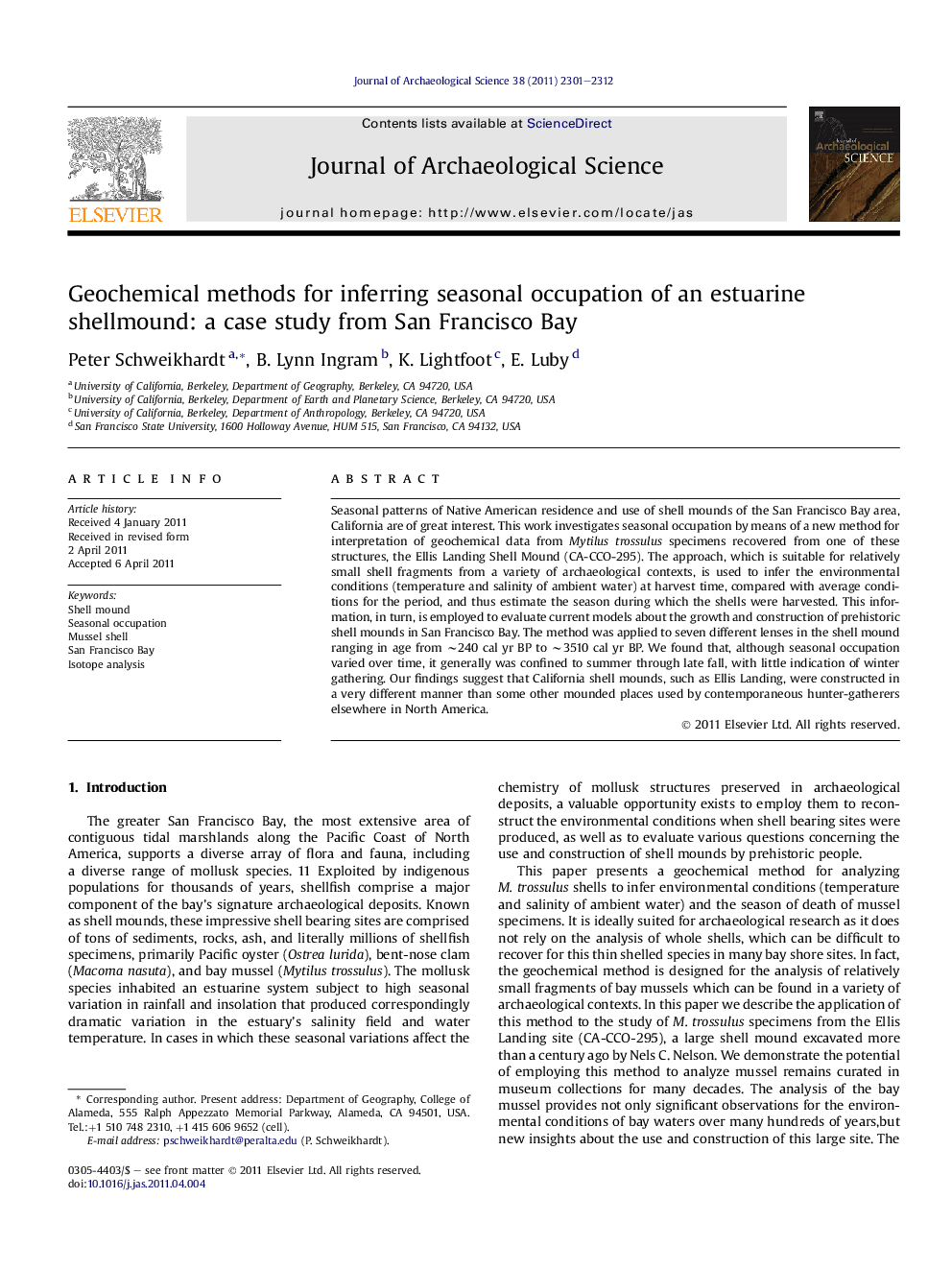| Article ID | Journal | Published Year | Pages | File Type |
|---|---|---|---|---|
| 1036333 | Journal of Archaeological Science | 2011 | 12 Pages |
Seasonal patterns of Native American residence and use of shell mounds of the San Francisco Bay area, California are of great interest. This work investigates seasonal occupation by means of a new method for interpretation of geochemical data from Mytilus trossulus specimens recovered from one of these structures, the Ellis Landing Shell Mound (CA-CCO-295). The approach, which is suitable for relatively small shell fragments from a variety of archaeological contexts, is used to infer the environmental conditions (temperature and salinity of ambient water) at harvest time, compared with average conditions for the period, and thus estimate the season during which the shells were harvested. This information, in turn, is employed to evaluate current models about the growth and construction of prehistoric shell mounds in San Francisco Bay. The method was applied to seven different lenses in the shell mound ranging in age from ∼240 cal yr BP to ∼3510 cal yr BP. We found that, although seasonal occupation varied over time, it generally was confined to summer through late fall, with little indication of winter gathering. Our findings suggest that California shell mounds, such as Ellis Landing, were constructed in a very different manner than some other mounded places used by contemporaneous hunter-gatherers elsewhere in North America.
► Geochemical analysis of mollusk shell fragments from SF Bay Area shellmound. ► Ages of sampled data range from to ∼3500 BP to ∼200 BP. ► Comparison of chemistry of shell edge versus random point indicates season of harvest. ► Permits inference of seasonal occupation/resource use patterns of mound users. ► Generally evidence for autumn use, but seasonality varies through occupation period.
